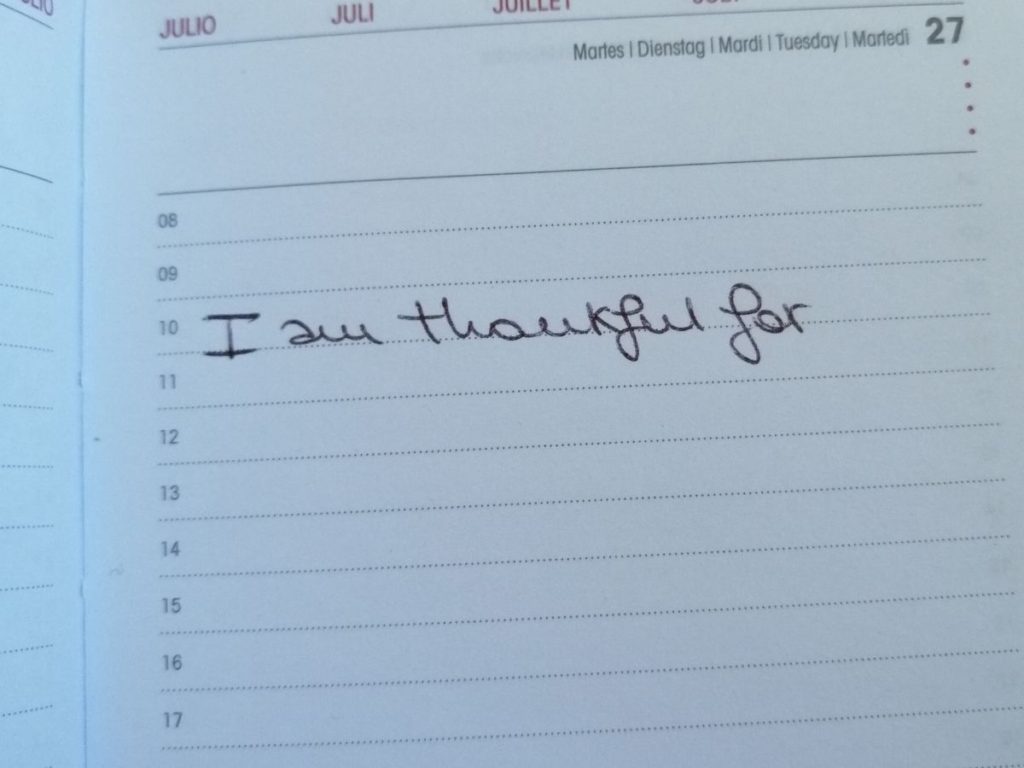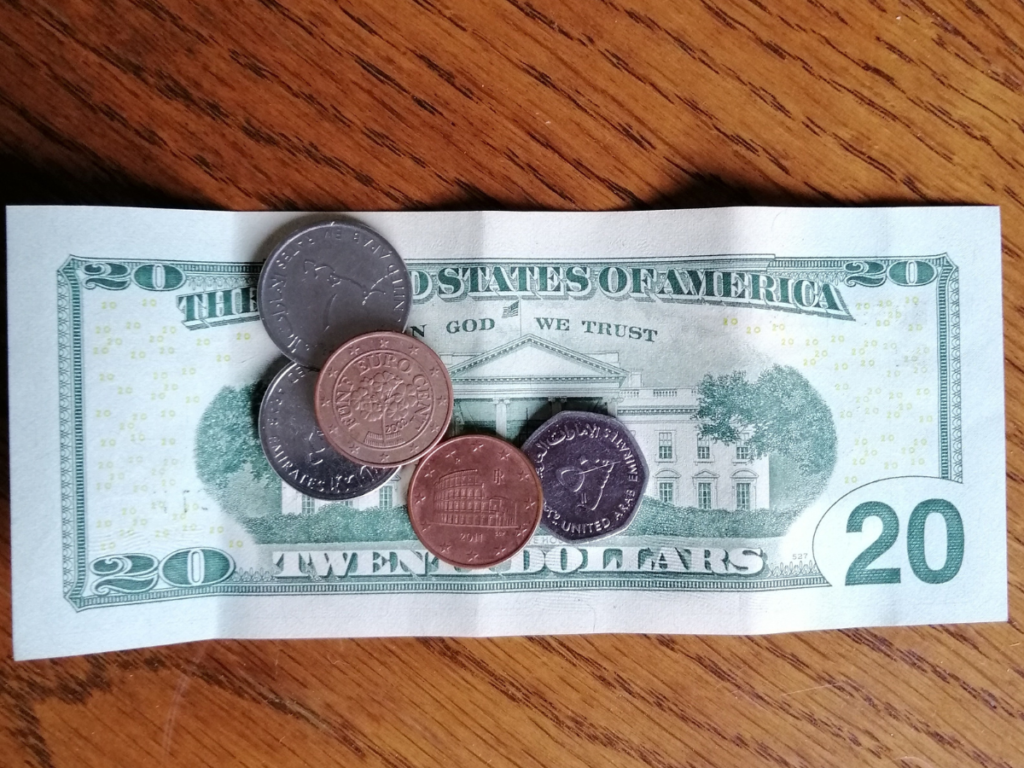An attitude of gratitude can make a huge difference in your quality of life. Even when things aren’t going as planned, or may be too hard to handle, an attitude of gratitude can help you keep a healthy level of appreciation for your life. Practicing the attitude of gratitude is something everyone should aim for. It can help you in those moments where you feel like giving up or make great moments even more exceptional.
However, when things are really hard, keeping an attitude of gratitude seems to be difficult, especially because routines may be disrupted and motivation to keep up with good practice is low. There are things that can be done even in those moments, to keep being thankful and help yourself get out of the gutter.
Whatever your situation may be, this post is all about giving you the tools to help you develop and maintain your attitude of gratitude.

What Does Attitude of Gratitude Mean?
The attitude of gratitude is the essence of a strong mindset that focuses on the good things going on in one’s life. Creating a mindset based on gratitude means shifting your focus on those things that truly make your life better. It is completely different from toxic positivity. In fact, being grateful for something doesn’t mean refusing negative emotions and thinking everything is always great.
The shift in focus helps you direct your energy into something fulfilling. This may possibly give you motivation and a sense of calmness. Your mind puts its effort and energy into whatever you are feeding it. Developing the habit of guiding your mind towards the fulfilling feeling of gratitude can help you not waste your energy. This is not to say you don’t have to analyze things that may be negatively affecting your life. It just means it is important to integrate said analysis with an intentional focus on the good things you have.
This may be especially important for people with an overactive mind and for those who have developed obsessive thinking. We know how the mind can get stuck on something when in distress and, if we can build a pattern it can automatically follow towards a sense of gratitude and the appreciation of the good things in life, we may be able to help ourselves not being overwhelmed, sometimes.
Is Gratitude an Emotion or an Attitude?
Gratitude is an emotion, and you may want to build your mindset, an attitude, upon said emotion. The emotion is the one that will make you shift your perspective. The intentional guidance of your mind towards noticing things to be grateful for will lead to develop an automatic grateful outlook on things. That is how you get your attitude of gratitude.
Gratitude is often talked about in popular culture, and its power has also been scientifically studied in psychology. A 2010 study by Wood et al. reviews some of the scientific literature about the relationship, possibly causal, between gratitude and wellbeing, with a favourable conclusion about including gratitude practices to clinically increase wellbeing.
Working on the attitude of gratitude can be strategic to help you reach your goals and enhance the factors to your success.
Is Gratitude External or Internal?
When thinking about gratitude we may relate it to something external. We may be thinking about the nice gesture of a stranger or a good performance at work. Those are all things worth focusing on. However, gratitude doesn’t only come from the external space. A good thing to learn would be to be grateful for something coming directly from our inner self. You could be grateful to yourself for pushing you through an extremely hard day. You could be thankful that your past-self decided to learn a language that proved to be invaluable in a certain situation. So on and so forth.
When developing an attitude of gratitude, it would be important to focus on both, external and internal sources. This will give you the chance to reflect on those aspects of you that make you unique, and it also gives you more control over how you feel. Being able to pick from your inner source avoids dependency on the external ones.
This may prove particularly hard if you are not in a good place with yourself. That is, however, when focusing on what you are thankful for within you would be more important.

How Do You Practice a Gratitude Attitude?
A lot of guidelines about developing an attitude of gratitude cater to people who seem to be able to control every single moment and thing in their life.
Completely changing your environment is not always an option. You may not be able to surround yourself with people who are constantly grateful about everything. You may be too exhausted to be intentional about every step you take during the day.
Life is full of ups and downs, and so is motivation. Guidelines often seem to rely on motivation, and that is a dangerous path. Motivation isn’t a reliable friend. It will leave from time to time.
Even if you are in a great place in your life, you may get too distracted or busy to be constantly intentional about your mindset. We need easily applicable practices to build and maintain the gratitude mindset that can improve the quality of our lives.
Here are three things you can do to change your mindset into a grateful one.
1. Say Thank You to Your Daily Routines
Let’s start with the easiest one. Just say “Thank you”. Whom to thank? Whatever you do daily, whatever makes your life easier or better that day. Keep it simple. You have a meal: say “Thank you”. Having a meal is a privilege, even if many of us take it for granted. Just say thank you to your meal. No need of going into a huge Prayer (you can if you want to). If you get thirsty, say thank you to the glass of water. The vase that falls on the floor doesn’t break: say “thank you”. So on and so forth.
Try to do this as many times as you can, without letting it become a numbing activity. You don’t need to go in deep prayer or meditation to feel the gratitude emotion every time you pick up a sock. However, you also don’t have to trivialize what you are doing and become numb to the activity.
This activity doesn’t require a lot of effort, and it is probably the easiest one to get you to notice little things that make your life better. You can build upon that, but you at least have the basis covered.
2. Say Thank You to Yourself
This is similar, but it takes a bit more effort. Thank yourself for whatever positive thing you do. If you are feeling worthless, as it can unfortunately happen, this is obviously the hardest thing to do. Try to set a goal of finding at least one thing to be thankful for, within yourself, each day. Don’t try to downplay everything you do. That is tempting and easy when not feeling good about yourself.
Did you make yourself go through the day? Thank yourself. Did you get up in the morning? Thank yourself. Did you choose to do something nice for somebody else? Thank yourself, because you chose to be that kind of person in that moment, even if you don’t think you are that kind of person all the time.
If finding one thing per day is too much, try to start little and build from there. Maybe set yourself the goal to find something to be grateful for within yourself every three days. Set a calendar reminder for it: you may conveniently forget, otherwise.
3. End Your Day Writing Three Things You are Grateful for
This is the obvious one, but it is a good one and it’s fast. I prefer to do this before going to bed, so to close the day on a good note.
Take a dedicated notebook, there are plenty gratitude journals designed for this. You don’t really need a specific gratitude journal, any notebook will do. Choose whatever spikes your interest. Write down the date and start listing your three things.
Try to change the things you are grateful for from one day to another. This is not to say that you can’t ever repeat things. Just don’t make every day the same. You can gather your gratitude from external or internal sources.
Taking a moment to go through your day finding things that make you feel good and thankful is an extremely powerful activity. If the evening doesn’t work for you, it’s not an issue. Choose the time of the day that you prefer. Some prefer the morning, some the night, some do it whenever they have time. Doing it is all that counts.
How Often do You Practice Gratitude?
Practicing every day would be ideal. Even if you only practice one of the three activities mentioned (or any other that you may come up with), daily practice is the best way to go. Repetition has a strong power on our minds, and that can be used to our advantage.
If daily repetition is too much for you, just start setting your own pace. Remember to set reminders for it, especially if you tend to self-sabotage. Even if you don’t, it’s a good thing to stay on top of things through scheduling.
If you skip a day, a few days, or a few months, just go back to it when you can. Instead of feeling bad for what you skipped, thank yourself for getting back to it. Thank your progress, as well.
Summing-Up
Practicing gratitude can help you build an attitude of gratitude that can elevate your quality of life and wellbeing. You can practice daily to boost the improvement in your mindset or you can choose whatever pace you prefer. The post showed three practices that can be implemented even when not feeling good about yourself and your life:
- Thank Your Daily Routines
- Thank Yourself
- Write Down Three Things You are Grateful For






